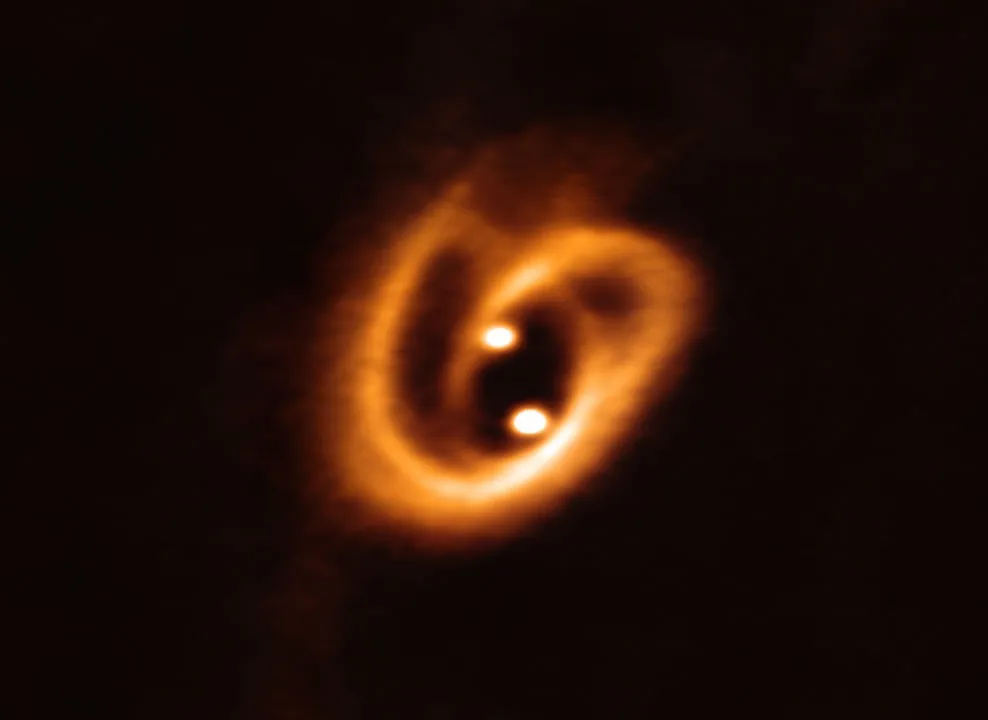The prospect of a planet having two suns may sound like science fiction (think Tattooine in the Star Wars universe), but they are science fact.
Binary stars – two stars orbiting one another – are common in our Galaxy, but less common is finding planets in a double-sun system.
More amazing exoplanets

That could be because, when you add a third body into a gravitational system, things often go awry, and it's known as the three-body problem in physics.
But that means that, when astronomers do find planets orbiting binary stars, it gives them the chance to learn a lot about how and where planets can form.

Three worlds around two stars
Astronomers have found evidence of not one, but three Earth-sized planets orbiting a binary star system.
The 'suns' in this case are a pair of cool stars orbiting very close to one another, known as TOI-2267.
"Until now, in binary systems with known planets, these were always found around a single star or, in very rare cases, around both, but in those systems the stars were very far apart," says Francisco J. Pozuelos, researcher at the Institute of Astrophysics of Andalusia (IAA-CSIC) and co-leader of the study.
"A case like TOI-2267 had never been observed before."
The team say the discovery gives them vital insight into the formation and stability of planets in double-star systems.

What we know about TOI-2267 and its planets
TOI-2267 is a binary star system 190 lightyears from Earth, which makes it very near to us, in astronomical terms.
The stars orbit close to one another: just 8 times the distance between Earth and the Sun.
Astronomers say these types of 'compact' binary systems don't lend themselves well to planet formation.
But the team have identified three Earth-sized bodies in short orbits around the system.
"Our discovery breaks several records, as it is the most compact and coldest pair of stars with planets known, and it is also the first in which planets have been recorded transiting around both components," says Pozuelos.

The team used exoplanet search software called SHERLOCK to detect two of the three planets in the system.
Follow-up observations were then made with ground-based telescopes, including the 1.5-metre telescope at the Sierra Nevada Observatory in Spain.
Confirmation that the objects were planets was achieved using different telescopes, including the SPECULOOS and TRAPPIST telescopes, led by the University of Liège, Belgium.
"This discovery allows us to test the limits of planet formation models in complex environments and better understand the diversity of possible planetary architectures in our Galaxy," says Sebastián Zúñiga-Fernández, a member of the EXOTIC group at the University of Liège and lead author of the study with Pozuelos.

A planetary re-think
The team say their discovery raises questions regarding planet formation in binary star systems.
New observations, like with the James Webb Space Telescope and future ground-based telescopes, could help astronomers learn more about TOI-2267.
"This discovery forces us to rethink current theories of planet formation in binary systems, which until now have prevented Earth-like worlds from emerging and remaining stable in such complex systems," says Pozuelos
"Most importantly, it opens a completely new window into understanding how planets form and evolve in extreme environments."
Read the full paper at arxiv.org/abs/2508.14176

